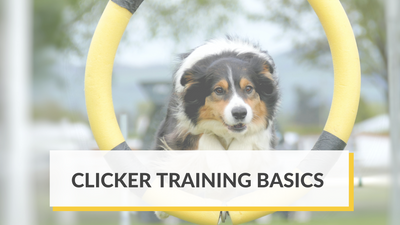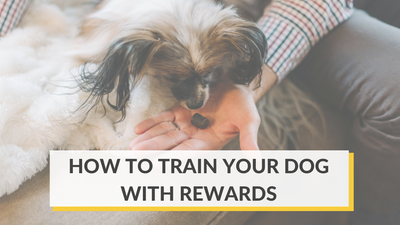House training is a must if you want to keep your pup happy and your house clean. It's important to establish the basic house rules for your dog so that he knows not to pee and poop around the house. While it may require some patience and love for your pup to understand the rules of the household, it should be one of the first steps in introducing a new furry member to the family.
Step 1: Establish a confined living area
Believe it or not, dogs are actually instinctively clean animals. Dogs will usually avoid soiling near their personal living space, which can be a crate, a fenced area, or a room. It’s important to set up a personal area for your dog because, like humans, dogs also like having some private “me” time to rest. As soon as your dog identifies the space, you can gradually extend the living area so your dog has a bit more freedom around the house.

Step 2: Establish a potty spot
Next, you need to find a consistent spot for your pup to do their business. The bathroom spot can be in a specific area in the house with a pee pad or in a yard. If you have an apartment dog, you’ll most likely have to set out a designated potty area indoor. Make sure the spot is easily accessible because you will have to accompany your pup to the spot during the initial stages of training.
Step 3: Accompany your pup to the potty spot
Take your pup to the spot at least once every 30 minutes so that he can learn the concept of potty breaks. Remember, every dog is different so you might want to adjust the time of potty breaks accordingly.
When you take your dog to the potty spot, avoid moving around too much as your dog would be distracted from the task at hand. Try to stay still, silent, and wait patiently for your pup to go potty. Wait for about 5 to 10 minutes and see if your dog has finished pottying.

Don’t worry if your dog does not go potty within 10 minutes. Simply bring your pup back to the confined living area and wait for another 10 minutes. Having a small record of when your pup goes pottying would help the house training process. Once you get a hang of your pup’s behaviour, it would be easier to bring your dog out at certain times.
Step 4: Praise and reward
Positive reinforcement will be your best friend when you’re trying to house train your pup. Dogs are more likely to quickly learn about the concept of “potty” when there’s a reward at the end. Praise and give your pup a small treat every time he potties at the potty spot.
In addition to giving praises and dog treats, you can also reward your dog with some free time outside of the confined area. By allowing your dog free time and playtime after pottying, you’re establishing the concept that pottying will lead to more fun. Therefore, your pup would be more willing to potty at the designated potty spot!

Your dog might get anxious if you lead him right back to the confined area after pottying. The anxiousness might then develop into poor dog behaviours such as barking, whining, and defecating in the confined living space.
Step 5: Build the habit
Repeat steps 3 and 4 throughout the day when you are at home. Once your dog consistently goes potty at the designated potty spot, you can slowly give your dog access to more areas in the house. It’s important to slowly introduce your dog to other spaces in the house so he can build the cognitive connection between the house and his personal living space.
Dogs don’t like to defecate in their personal living area. Supervise your dog at all times and try to make sure that your dog’s bladder is completely empty before you allow him access to other spaces in the house.

Expect accidents
It might take a few days or weeks for your dog to be fully house trained so anticipate many accidents. If you catch your dog in the act, interrupt your pup by making a startling noise and take them to the potty spot immediately. After they finish pottying at the correct spot, reward them and go back to clean up the space. Never punish your pup if you find a soiled area in the house because your dog may not understand the reason for your anger. When you punish your dog for accidents, he might get scared of pottying in your presence and would not want to defecate in the potty area anymore.

Additional tips for house training your pup
- Take your dog to the potty area after eating. Set out a consistent feeding schedule to find the pattern of your dog’s potty patterns before and after each meal.
- Keep your pup on a leash if you’re taking them outside for potty breaks, even if it’s just in your backyard.
- Watch for signs that your dog needs to go potty, such as circling, squatting, sniffing, and restlessness. Take your dog to the potty spot immediately when your dog demonstrates any of those “suspicious” behaviours.
- Don’t change the potty spot once you’ve established it to avoid confusion for your pup.
House training doesn’t have to be a difficult process. Just remember to stay consistent with the potty breaks, monitor your dog’s behaviours closely, and positively reinforce with rewards!
















